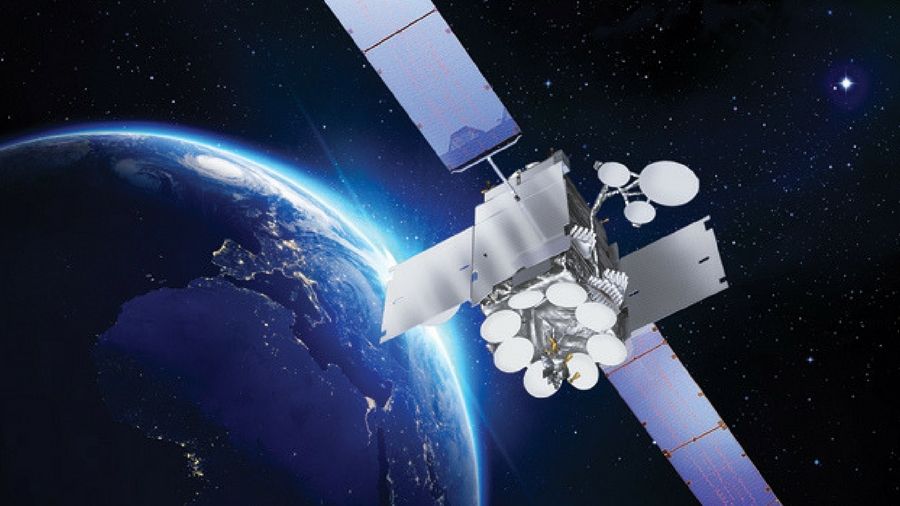What are the limits for satellite connectivity?
Can satellite be a viable option in connecting the unconnected?

Satellite broadband has an image problem. Although no other technology can match it for coverage, satellite is perceived by many to be slow, expensive and unresponsive.
But proponents believe that its unparalleled reach combined with a new wave of satellites designed for Internet rather than broadcasting will make it the ideal technology to connect the “next billion” in areas where fixed and mobile coverage is inadequate.
Over the past few years, ViaSat has launched several new satellites that have greatly increased capacity and are capable of delivering speeds of 100Mbps. The company’s CEO Mark Dankberg is eager to dispel myths and improve satellite’s reputation.
Changing times
He argues there is a tendency to make sweeping generalisations about satellite communications and treat each variation of the technology as the same. This, he says, ignores recent developments and is founded on the belief that satellite is still only suitable for television.
“The single biggest issue in the satellite industry is that people lump them altogether and don’t understand what’s different,” he tells TechRadar Pro. “It’s understandable because for the first 30-40 years [satellite was] dominated by broadcast economics.
“The cost per bit of satellite might be expensive but you can broadcast and divide it to a million people. This means broadcast has been the killer app for satellite for 30 years. But unicast data means you can’t divide it anymore and it gets more expensive.
“if you were using satellite for data services would you do it differently? Of course. And now because there’s less demand for broadcast, this spectrum is being repurposed for mobile.”
Are you a pro? Subscribe to our newsletter
Sign up to the TechRadar Pro newsletter to get all the top news, opinion, features and guidance your business needs to succeed!
Connecting the next billion
Dankberg argues that because ViaSat doesn’t have legacy satellite assets it wants to sweat, it is free to pursue the possibilities afforded by this new approach. He sees IoT as an opportunity, but also connecting rural communities with affordable, high performance Internet.
“We’re applying satellite to multiple vertical markets,” he says. “One of these is emerging markets, something we call community Wi-Fi for areas unconnected for one of two reasons: geographical isolation or because they’re not economically attractive to serve.
“We’ll go into towns that are generally remote and small, often hundreds of people, and that town has a few hundreds of dollars a month to devote to connectivity: voice, data, everything.”
“Cellular connectivity can cost hundreds of thousands of dollars before you even think about backhaul. For a thousand dollars we can set up a satellite terminal and some repeaters to bring Wi-Fi [to a community].”
In this scenario the terminal is hosted by a local entrepreneur or a business such as a post office and residents can purchase prepaid access to the network which can be used around the town or village.

The latency elephant
In most cases the speeds are faster than any comparable network and although Dankberg accepts latency might still be higher but that people in these communities aren’t fussed given the lack of affordable alternatives.
“We’re able to deliver high speed and attractive performance,” he continues. “[If you’re choosing] between connections with the same speed, capacity and cost then of course you’ll go for the one with lower latency. But you’d rather go for a higher latency connection than one that is more congested or more expensive.”
ViaSat has deployed this model in the US, Brazil and Mexico and Dankberg stresses it is a commercial venture that doesn’t need to be subsidised. That’s not to say some authorities haven’t taken an interest given the societal and economic benefits on offer.
“Mexico has had various initiatives where they wanted to make government services available in remote areas,” he explains. “[But] the service was poor because there wasn’t enough bandwidth to subsidise, so the government has been supportive in terms of licences and tax relief.
“The Brazilian government has a state-owned infrastructure company called Telebras, which is a middle-mile, so no access network. They worked out an agreement with us. They had an agreement to provide connectivity to schools and also wanted to create a pre-paid wireless service.”
Future of satellite
There is also hope that governments increasingly look at satellite as one of multiple methods of improving connectivity.
Dankberg says governments and policymakers shouldn’t be pursuing ideological fibre-only strategies in which huge amounts of public funding is made available for one type of technology.
“I don’t think there is a one-size fits all solution. Some governments are calling for FTTP-only, or 5G-only. In these environments, you need to make trade-offs. We see that in a lot of these domains, speed and volume of bandwidth are much more important than latency. I think the main message is to think about what the requirements are and to see if there are free market solutions before dishing out subsidies.”
As for ViaSat itself, it believes it can push the boundaries even further. Dankberg raises the possibility of 10Tbps satellites in the future but for now the focus is on getting the cost down and making the service as attractive as possible.
“We’re really describing a view of satellite communications that no one really else has,” he says. “We’re investing in new satellites. We’re trying to earn a return on this business model. We’re trying to demonstrate there is demand in these markets, which in aggregate is a lot of demand and show there is a growing market.
“If we do that, then we have a bright future ahead of us: It’s about creating solutions. It’s in the public interest.”
Steve McCaskill is TechRadar Pro's resident mobile industry expert, covering all aspects of the UK and global news, from operators to service providers and everything in between. He is a former editor of Silicon UK and journalist with over a decade's experience in the technology industry, writing about technology, in particular, telecoms, mobile and sports tech, sports, video games and media.












